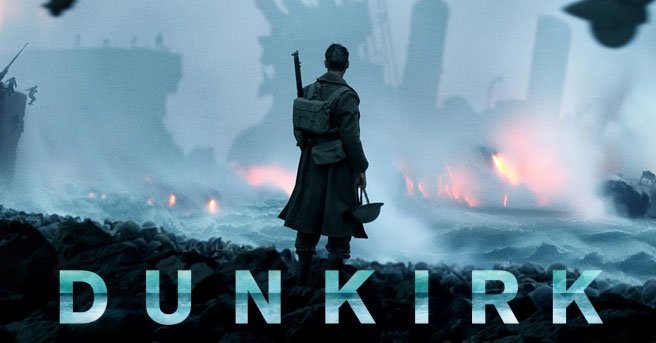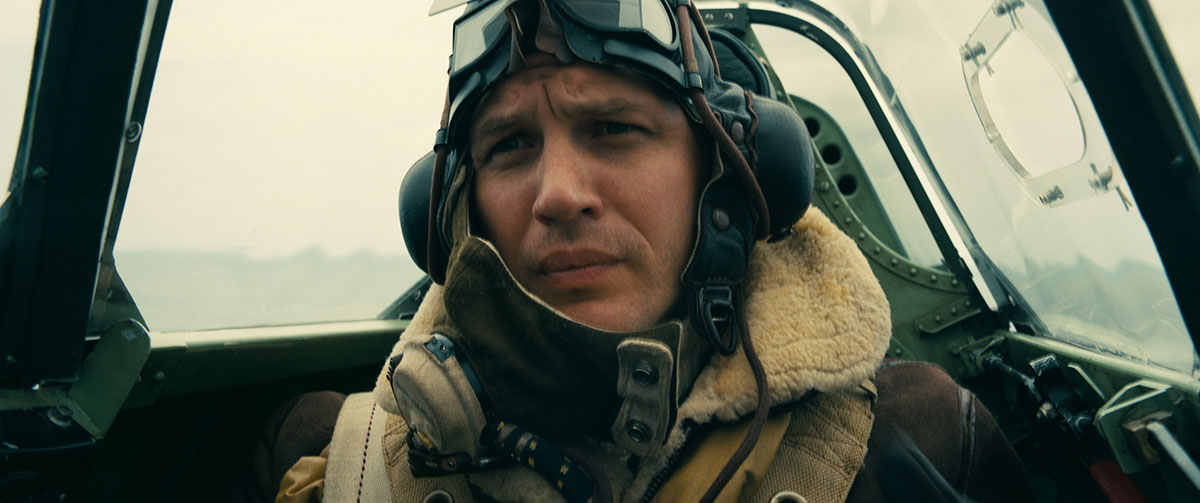Dunkirk: Just a masterpiece
In one of the most surprising scenes of Dunkirk, Christopher Nolan's new and wonderful feature film, a British plane in flames is seen. The film recounts an early and harrowing campaign in World War II that happened months after the Germans invaded Poland and weeks after the onset of Hitler's deployment in the Netherlands, Belgium, Luxembourg, and France. After planning to stop, the pilot sets the plane on fire, defiantly, to avoid being captured. It is an unmistakable image of defeat, but also the emblem of resistance and an omen of the dreadful conflicts that are to come.
It is a complex and compact vision of war in a film that is insistently humanizing despite its monumentality; A balance that is both a political and aesthetic decision. Dunkirk is great in terms of its theme, scope, emotion and image. Nolan filmed and finished much of the film in large format (something unusual in the digital age), which allows the details to be appreciated on a large scale. The aerial shots of the soldiers stationed on a beach convey a disturbing isolation ... as if it were the last remaining souls on Earth, infinitely alone, abandoned. The film also enriches the texture of the image; Attracts you, which is crucial because of the minimalist dialogues.

The film is based on a campaign that began in late May 1940 in the port city of Dunkirk, France, where some 400,000 Allied soldiers - including more than 200,000 British Expeditionary Force members, the British Army in Western Europe - were left Under the siege of the Germans. Before the capture and possible annihilation of its troops, the British initiated a ransom seemingly impossible. With the name Operation Dynamo, this mission has gained an almost mythical status in British history and has been explored in books and on the screen; Appears in Mrs. Miniver, a Hollywood melodrama of 1942 on the pain and perseverance of the British during wartime; Its purpose was to encourage American support for the Allies.
War films tend to develop along lines familiar to them, including nationalist and melodramatic narratives such as Mrs. Miniver. Dunkirk explores the moment of battle but it is also a story of suffering and survival. Nolan largely avoids the broader historical context (among other things, why these men fight for granted), as well as strategic planning at the front and in London, where the new Prime Minister, Winston Churchill, faced the frightening possibility that military forces would diminish. It is known about Churchill, somehow, but it does not come out on screen. Instead, Nolan focuses on a group of men who make their way in history by fighting and feeling panic, in the sea, in the air or on dry land.
At times intimate and crushing, the film begins with six soldiers who move away from the camera in a street chilling and deserted. Their bodies are shown from head to toe, and low buildings flank them, of those that look lovely in tourist photographs. Around the soldiers fly pieces of paper, like leaves in the autumn. Some take the papers. One tries to drink water from a hose that is out there; Another puts his hand in an open window and looks for a cigarette. Another one reads one of the papers, which has a map of the surrounding area full of arrows and ominous warnings in English. Then he squeezes it, takes off his belt and starts squatting.
It's a strangely funny and somewhat disconcerting moment ... this is an obviously serious situation and we are about to see a man defecate. You do not know if to laugh, but before you decide, you hear shots and the soldiers begin to run; The camera follows them quickly. The lugubrious emptiness is suddenly filled with the frenetic sounds of those who escape and the whirring of the bullets. Then the men begin to fall: one, two, three, until only the one who has lowered his pants is left; After jumping a grating, soon arrives at a beach where thousands of soldiers are grouped waiting. In silence, he absorbs the extraordinary scene and then moves away to a dune to unbuckle his belt again.

Almost no word has been spoken up to this moment but it has been expressed a lot: isolation, danger, desperation, fear, relief and bodily needs as pure and extreme as the soldier's efforts. Throughout this implicit prologue, Nolan emphasizes the concrete details, and makes us perfectly aware of the complex textures - wounds and dirt embedded in a man's hands - and every resonant sound: dripping water, noise Of the paper, as well as the mechanical hum and the sharp click of the rifle shots, which become deaf thrusts as the bullets pass through the bodies. By the time the surviving soldier arrives on the beach, we are already familiar with his hectic breathing, his hustle and running, clumsy and chaotic.
It is not long before the scene switches to another port where a British teenager, George (Barry Keoghan), is helping a father and son (Mark Rylance and Tom Glynn-Carney) to unload a small yacht to be used in The Dunkirk mission. Instead, the three set out to join a fleet of civilians-a navy infested with tugboats, steamboats, ferries, and so on-that is traversing the channel. An astonishing third narrative section soon begins in the air where three British Spitfire aircraft engage in a battle against German aircraft heading for Dunkirk; They fly through the vast foliage and glide under the clouds as the sun shines and temporarily blinds them.
Nolan's flexible narrative approach works wonderfully at Dunkirk, which oscillates between three sections; Each occurs in different locations and different intervals. The events of the beach - called "breakwater" due to the breakwater used as a jetty - are developed over a week. Sea events occur in a day, while aerial scenes run for an hour. Locations and periods are announced on the screen. At the beginning, the dividing lines are not always obvious as Nolan moves from scenes during the day on land to others in the sea and in the air, a slight fusion of space and especially of time, which emphasizes the magnitude of a battle that there seemed no end.
As soon as Nolan begins to move from day to night, the confines of the three narrative segments are defined almost completely. Even as each section - with its dangers and individual dramas - is explored in detail, Nolan allows all of them to dialogue in a dynamic way. Sometimes he achieves it with marked visual echoes, like when a downed Spitfire is filled with water and the pilot sinks while elsewhere a soldier almost drowns (Tom Hardy plays the most important pilot, while a compassionate Jack Lowden has a essential secondary role). There is a time when Nolan interweaves the narrative threads in such a way that it creates a feeling of a terrifying terror that clogs the bones.

Dunkirk is a film based on World War II; The story is told through the soldiers, their experiences, their experiences near death and their bodies under siege. Generally, names are irrelevant; On the beach - in the sea and the air - what counts is the range, the drive and the ability to somehow avoid the bombs that explode. Nolan's emphasis on Dunkirk's visceral reality leaves many things implicit; Even in an explanatory text that appears at the beginning identifies the enemy as Nazi Germany. Of course, the soldiers know exactly who they are fighting against and maybe even why, but in the field, the enemy is a stranger trying to assassinate them.
The soldier who jumps a grating and reaches the beach appears in credits like Tommy (Fionn Whitehead), but I do not remember to have listened or read its name. I simply thought of him as "our boy," not so much because of his youth, but because of the vulnerability communicated through his thin figure and his tangible physical performance, gestures and movements large and small: eyes wide and panic ; Nervous and abrupt gestures; Hunched shoulders. At the time, other soldiers join Tommy to wait, run and hide on the beach, the most important are played by talented Aneurin Barnard and Harry Styles.
Nolan's relentless emphasis on soldiers-and on the experience of war to the detriment of war strategies-blurs the story, but surprisingly brings the present and its wars to light. Dunkirk is a masterful film, it is a cinematographic art and technique, but it is a film that is unequivocally at the service of a sincere, sober and profoundly moral story that shortens the distance between the battles of yesterday and those of today. Nolan achieves it cinematographically with overwhelming images and emotional intimacy, with scenes of war and survivors terrified and crowded together with the soundtrack of Hans Zimmer, resonate throughout the body.
Thank you for reading my review, I hope you enjoyed it! Regards, Antonio.
I think this movies gonna be my fav and thanks for this post
I watched this movie twice